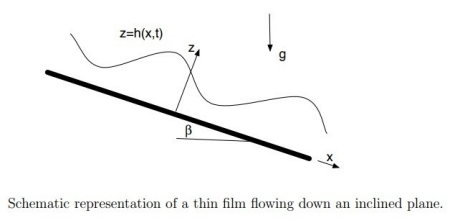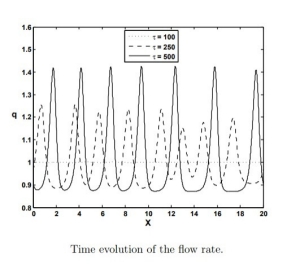Using Mathematical Modelling to Advance Fluid Mechanics

The focus of Ellaban’s thesis research – from rain gutters and ketchup bottles, to sewers to canals.

Eglal Ellaban, who recently earned her master’s degree in Mathematics at Ryerson, has devoted her studies to advancing the scientific understanding of fluid mechanics.
If the mathematical modelling of fluid mechanics problems seems obscure at first glance, she emphasizes that real-life applications can be found everywhere. If you consider the dynamics involved when a liquid flows down an incline, for example – which happens to be the focus of Ellaban’s thesis research – everyday examples include everything from rain gutters and ketchup bottles, to sewers to canals.
Yet there are also much more complex applications, explains Ellaban. “Liquid films flowing down an inclined plane have widespread applications in both environmental phenomena and industrial settings,” she says, citing wide-ranging examples such as coating applications, polymer processing, lava flows and mud floods.
What continues to fascinate researchers like Ellaban are unanswered questions. Though the gravity-driven flow of liquid has a certain simplicity, the underlying dynamics are complex and still not fully mapped out, she says. “The formation of interfacial waves due to hydrodynamic instability exhibits complicated dynamics.”
Supervised by Jean-Paul Pascal (opens in new window) , a professor in Ryerson’s Department of Mathematics, Ellaban’s thesis research goal was to advance scientific understanding and potential applications for society in this area. (Serge D’Alessio (external link, opens in new window) , a University of Waterloo mathematics professor, also worked with Ellaban on this project.)
Her approach built on previous scientific work and was based on an advanced theoretical model for binary fluids, a mixture of two liquids, which are subject to the so-called Soret effect whereby heating acts to separate the liquids. Ellaban explains that she extended the model to include a “slip condition” between the flow and the solid surface. “This is a clever theoretical concept that accurately describes flows over permeable surfaces, and thus gives the model a more realistic description of naturally occurring flows and applications found in industry.”
She adds, “We studied the stability of the steady flow of a thin film layer with uniform thickness comprised of a binary liquid mixture down a uniformly heated slippery incline. A theoretical model is employed consisting of conservation equations for momentum, energy and solutal concentration. The model captures the Soret effect and implements a Navier slip condition at the liquid-solid interface with slip length being the parameter which measures the deviation from the no-slip condition.”
Further explaining the mathematical modelling, Ellaban says, “In carrying out a linear stability analysis we obtained an eigenvalue problem involving Orr-Sommerfeld type equations governing the evolution of infinitesimal perturbations to the equilibrium flow. An asymptotic analysis of the eigenvalue problem for small perturbations wavenumbers yielded an expression for the critical Reynolds number for the instability of very long perturbations. By numerically solving the eigenvalue problem we were able to construct the state of neutral stability for general wavenumbers and obtain the critical Reynolds number for the onset of instability of the equilibrium flow.”
With her primary aim to investigate how bottom slip interacts with the other factors affecting the stability of the flow, Ellaban says ultimately, the main conclusion of her investigation was discovering “that bottom slip acts as a general destabilizing factor… Specifically, the region of stability shrinks as the slip parameter is increased. Also, for larger value of the slip parameter the region of stability disappears sooner as the Marangoni or Soret number is increased. In other words, on a slippery surface lower levels the thermocapillarity or destabilizing solutocapillarity are required to render the equilibrium flow unstable for all Reynolds numbers.”
Ellaban’s research was recently published in the journal Physics of Fluids (external link, opens in new window) (Vol.29, Issue 9) in an article called, “Instability of a binary liquid film flowing down a slippery heated plate.”
Currently, having completed a very enjoyable period as a Master’s student – “Being a graduate student means you’re constantly either teaching someone or learning something which are both my favorite jobs!” – she is now pursuing her PhD at Ryerson.
Ellaban’s research project was funded under her supervisor’s NSERC Discovery grant.
